Cryptocoryne: varieties, care and reproduction
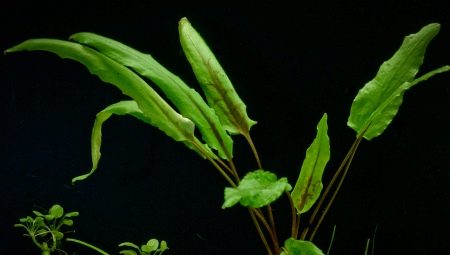
Choosing a design for a home aquarium is a crucial step that requires special knowledge. Vegetation in an aquarium is not only a source of oxygen in the water. It is also capable of supporting vital processes in the body of any species of fish and other inhabitants of the aquarium. When choosing plants, you should pay attention to Cryptocoryne.
An unpretentious plant has a whole variety of species. This article will discuss the features and varieties of the plant, as well as the methods of its reproduction, planting methods and conditions of detention.

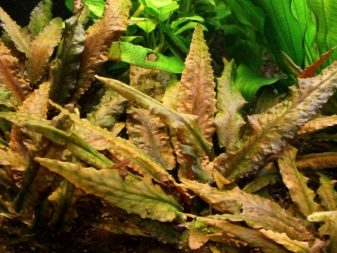
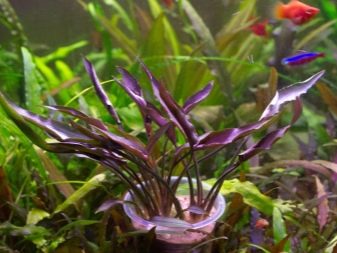
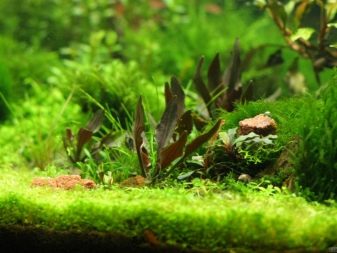
Peculiarities
A plant of the aroid family has the appearance of a miniature bush with a large rhizome. The height of the bush depends on the species and content and can vary from 5 to 100 cm. In a home aquarium, the plant can grow up to 26 cm in height.
One root can produce 4-16 leaves. Their shape is different, and the surface to the touch is smooth or bubbly.
The colors of the plant are varied - Cryptocoryne exists in different colors from brown to green to reddish.
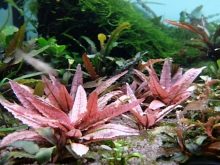

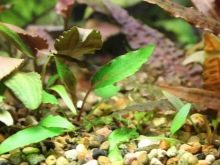
The vegetation name has two parts:
- crypto (lat.) - hidden;
- koryne (Greek) - ear.
There is indeed a small ear inside the flower. The flower itself looks like a flute. It is quite difficult to achieve flowering of a plant in an aquarium. Most often, hobbyists only have to admire the leaves.
The aquarium plant develops very slowly and reproduces as well. However, it should be noted that the root rarely loses leaves, so the plant is distinguished by its resistance and durability.
The roots of the vegetation are very tender but quite hardy.If you try to pull the plant out of the ground, then the root system will not be damaged and will easily come out.
A careful approach is required when choosing a soil for Cryptocoryne. The thickness of the soil must be at least 5 cm. In order for the development of the plant to not slow down, the temperature of the soil and water must be the same.
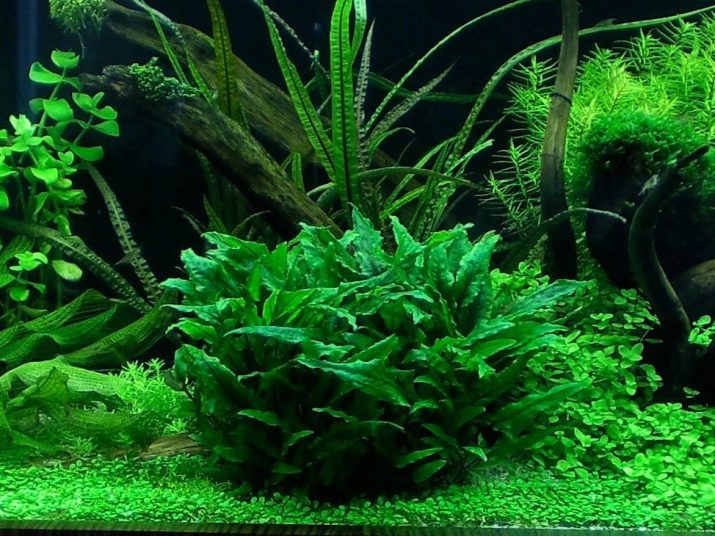
Of the features of the plant, it is also worth noting long-term addiction to new conditions of detention. That's why the plant can be transplanted once a year.
For healthy development and prevention of diseases, it is recommended to change the water in the aquarium once a week. In this case, it is enough to change a fifth of the volume of water for fresh water.
The variety of species allows you to choose a plant that will satisfy any requirement... The plant can thrive in the background or foreground, in the center of the aquarium, or in a shady location.
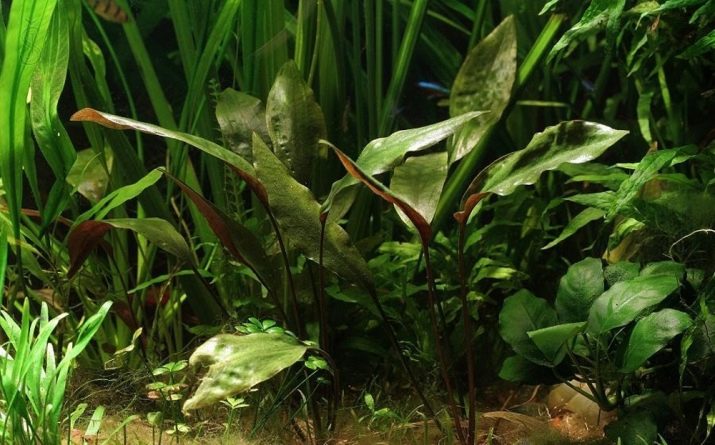
Views
The variety of species is striking in its number. It is worth considering the most popular varieties of the plant.
Aponogetonolistny
The native land of vegetation is the Philippines. In its natural habitat, the plant reaches 50 cm in height. In an aquarium, the plant grows up to 30 cm. The extensive rhizome is well developed and consists of long roots. The stem is straight, short in length. Leaves are petiolate, lanceolate, rosette-shaped.
The length of the leaves is 20 cm, the width is 4 cm. The color of the leaves is bright green, the plate is ribbed. The central vein of the leaves is convex and noticeable. The rest of the veins are less noticeable.
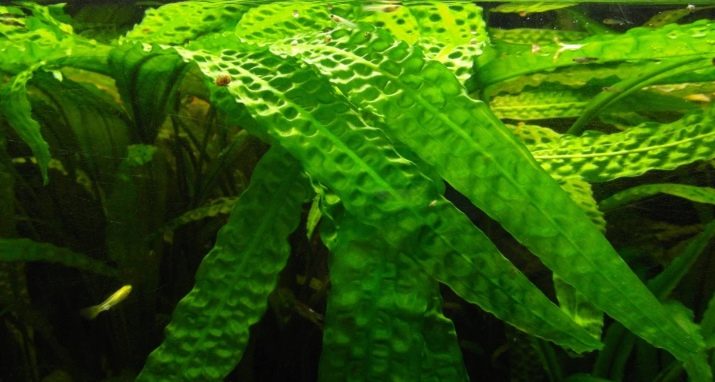
Yellow cryptocoryne
The island of Sri Lanka is the birthplace of this species. Unpretentious vegetation tolerates well changes in conditions of detention. Due to its beautiful appearance, the plant is in great demand among aquarists.
The shape of the yellow Cryptocoryne resembles a bush, has no stem. The height of the plant is 20 cm. The color of the leaves can change depending on the lighting - from bright green with a red vein to burgundy.
The plant grows and reproduces rapidly. Breeding is vegetative, and is carried out root shoots.

Wendta
Beautiful vegetation that grows in the vastness of the island of Sri Lanka. It can grow both underwater and on land. The original colors have made this species popular with hobbyists.
Wendta has several of the most famous subspecies:
- green vendta;
- Wendta is brown.
The first subspecies looks like a bush. The leaves are elongated - from light green to dark green. The stem is missing.
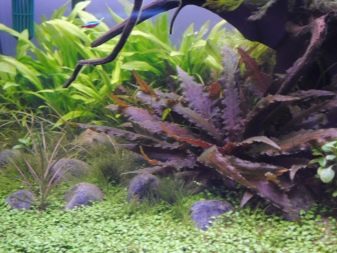
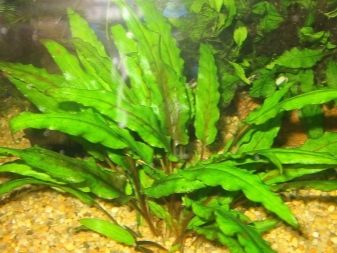
The second subspecies has longer leaves than the first variety. Plant height reaches 30 cm. Creeping root system with long rhizome.
In a home aquarium the plant should be fenced off from bright lighting. The plant does not tolerate direct rays and prefers shade near aquarium algae and plants. Lighting does not affect the growth and color of the leaves in any way.
Propagated by root layers. It grows quickly, so the bush of this variety looks aesthetically pleasing in the middle of a large aquarium.
Parva
The smallest species of Cryptocoryne. The unpretentious species perfectly tolerates changes in habitat conditions. The changes in the content do not affect the development and appearance of the plant.
However, parva requires a certain amount of light, so it is most often planted in the foreground. And also lighting affects the development of the root system and leaves.
In addition, a certain soil composition is required for the development of the rhizome. It is best to choose sand. Reproduction takes place with the help of root layers, which can be separated after the formation of 5 leaves.
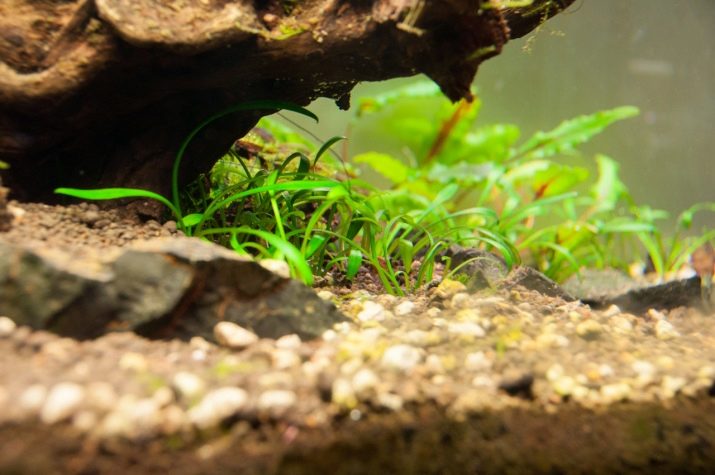
Pontederia-leaved
It grows in the vastness of the island of Sumatra, mainly in swampy areas. Heart-shaped leaves are collected in a bush. The length of the leaves can be up to 6 cm, the height of the bush itself is 20-30 cm. Pointed leaves of bright green color grow on petioles.
Tropical conditions are suitable for keeping in an aquarium, since the plant develops better in high humidity. Propagated by root shoots.

Cryptocoryne Beckett
Plant with a height of 12 cm in the form of a rosette of heart-shaped leaves. Each side of the leaves has a different color. The outer side is painted in a delicate olive color, the inner plate has a brownish tint. The maintenance of the plant does not require specific conditions.
However, the degree of illumination should be considered. Vegetation does not tolerate direct rays. The plant propagates by root shoots and grows well in the tropics.
An unpretentious ornamental plant looks great together with other plant decoration. This species will look best in the foreground or center of the aquarium.

Purple
Habitat conditions affect the appearance of the plant, making it difficult to identify the variety. The bush in the form of a rosette 40 cm high has oval leaves. The outer and inner sides of the leaves have a different color: the outer plate is colored in different tones of green, and the inner plate has many shades of red.
Vegetation does not require special lighting. Purple Cryptocoryne thrives in both natural light and shade.
This does not mean that the appearance of the leaves does not change. In the shade, the leaves of the plant take on a faded appearance. That's why for the normal development of the plant and bright colors, artificial lighting should be used. The plant also loves a humid environment. Such conditions facilitate rapid development and flowering.
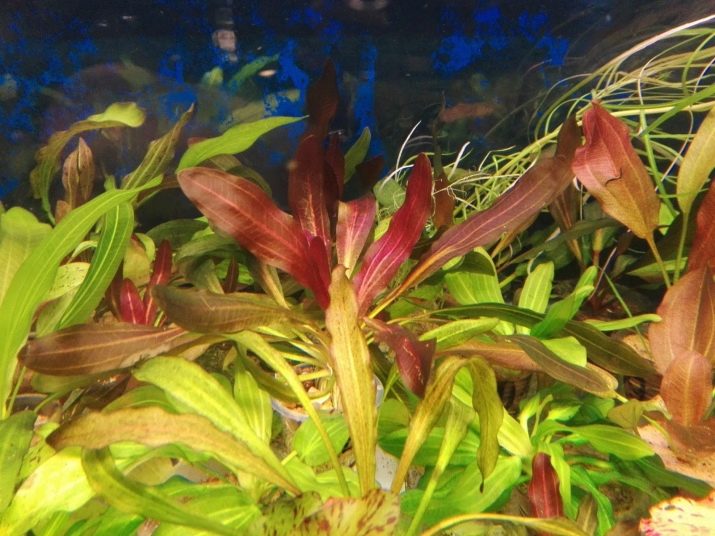
Griffith
This Cryptocoryne is native to Indonesia. In the natural environment, it lives in swampy areas. The root system is fibrous. The stems together with the leaves reach a height of 35 cm. The leaves are dense, egg-shaped, the length and width are 8 and 5 cm. The top of the leaf is slightly pointed.
The outer side of the plate is greenish with dark blotches, the inner side is light green with silver and burgundy touches.
On the leaf you can see one central vein, from which lateral veins extend, which are much less noticeable.

Heart-shaped
The native land of vegetation is in Thailand and Indonesia. Ovate leaves, together with petioles, grow up to 35 cm in height. The length and width of one leaf is 12 and 6 cm. There are specimens with wavy leaf edges and a slightly pointed apex.
The outer side of the leaf usually has a green-blue tint, the inner plate is colored in a light olive green with a red tint.
The central vein of the leaf is convex at the bottom, slightly depressed at the top. Up to 5 veins are visually noticeable. The rhizome is well developed and has white and brownish tints.
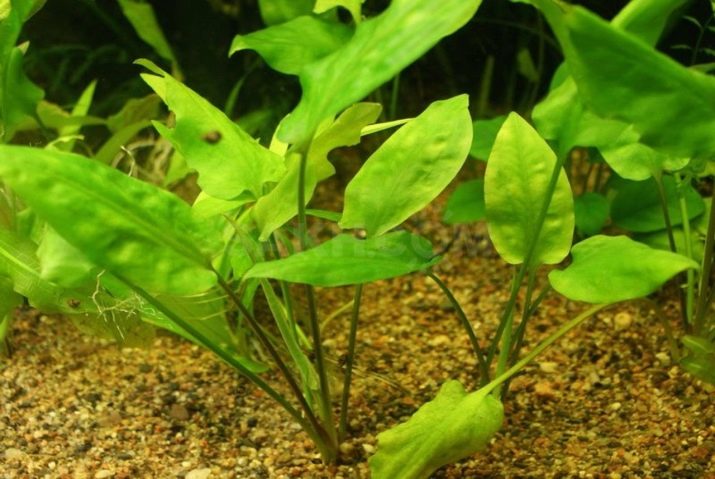
Cryptocoryne large
The homeland is the island of Kalimantan. The height of the leaves is 50 cm. Externally, the plant is similar to Cryptocoryne cordate. However, the large Cryptocoryne is distinguished by an extensive rhizome and large leaves. Leaves are oval slightly narrowed towards the base. Their length is 15 cm, width - 7 cm. Veins are noticeable in the amount of 5 pieces. This variety is suitable for large aquariums.
Favorable environment for development and growth - closed soil, semi-open and open ground.
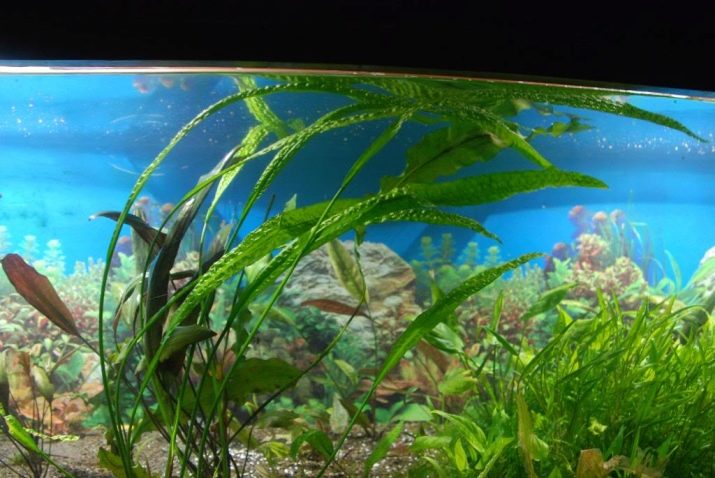
Vesicular
It grows in the northwestern regions of the island of Kalimantan. The plant got its name due to the compaction on the outside of the plate. Refers to perennial vegetation with a long rhizome.
The leaves are elongated and bright green. The length of the leaves reaches 11 cm, the width is 5 cm. On the sides, the leaves are wavy, closer to the apex they are slightly pointed. The base of the leaves is rounded. The central vein is prominent and prominent. Side veins are visible in the amount of 7 pieces.
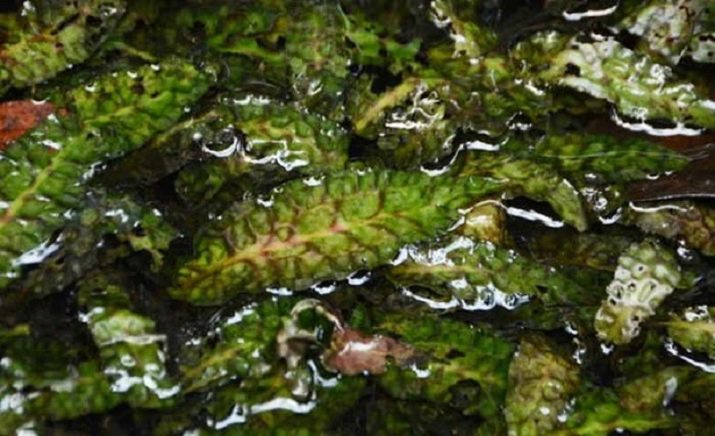
How to choose?
When buying an aquarium cryptocoryne, it is worth choosing plants with a well-developed rhizome. Leaves should be healthy and free from damage. The presence of deformed leaves will lead to poor growth and development of the bush.
When choosing a plant for aquariums with a constant change of lighting, you should pay attention to such types as Wendt, Parva, Cryptocoryne Willis, Lucens.
To decorate the aquarium with tall vegetation, choose varieties such as aponogenous, affinis, cordate.
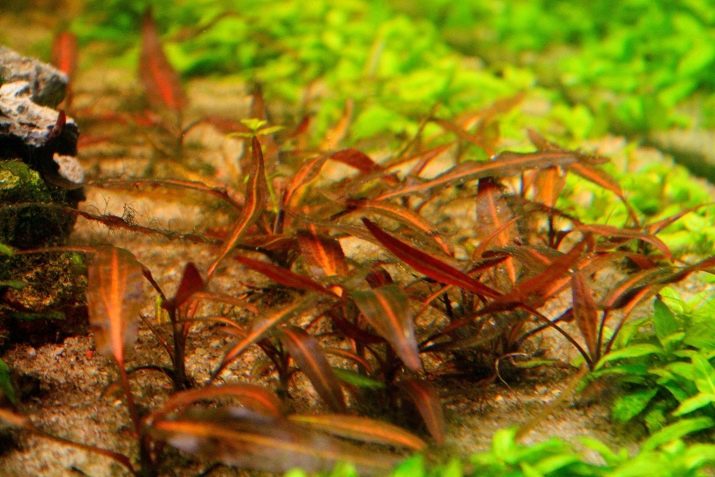
Aponogetonolytic Cryptocoryne, Parva, Albida like bright lighting. In low light, varieties such as affinis, griffith grow well.
And also the main criterion when choosing any type of plant is absence of "cryptocoryne disease". This nuisance occurs due to a change in the composition of the water during maintenance. The main signs of such a plant ailment are yellowed softened leaves. Such a plant will not grow and will die immediately when moved from one reservoir to another.
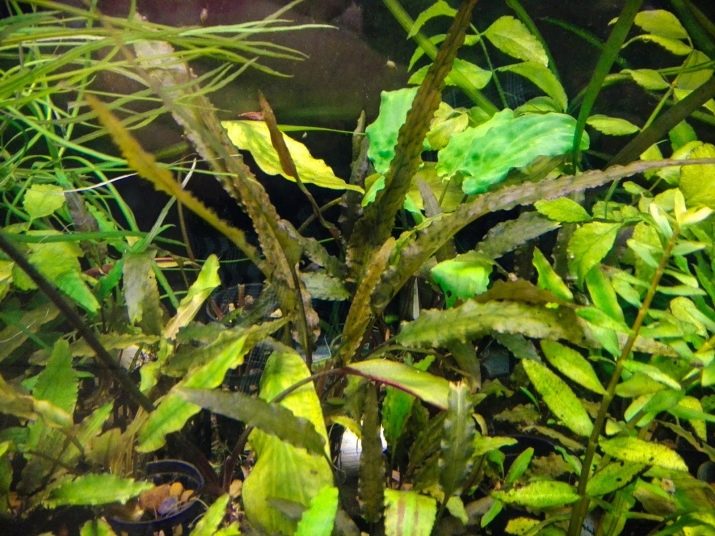
How to plant?
The plant is planted at a certain distance from other vegetation.
The distance is determined based on the variety. Most often, Cryptocoryne is planted at a distance of up to 10 cm from the stems of another plant.
When planting a plant, follow these instructions:
- with the help of the right hand, take the stem in such a way as to grab the central part of the rhizome with your fingers, while the roots should be in the hand;
- then, using the fingers of the same hand, a small depression is made in the ground;
- then the rest of the rhizome with shoots, if any, is buried;
- after that, you need to carefully pull out your hand and level the soil near the plant.
When properly planted, the root system of the plant remains in the soil.
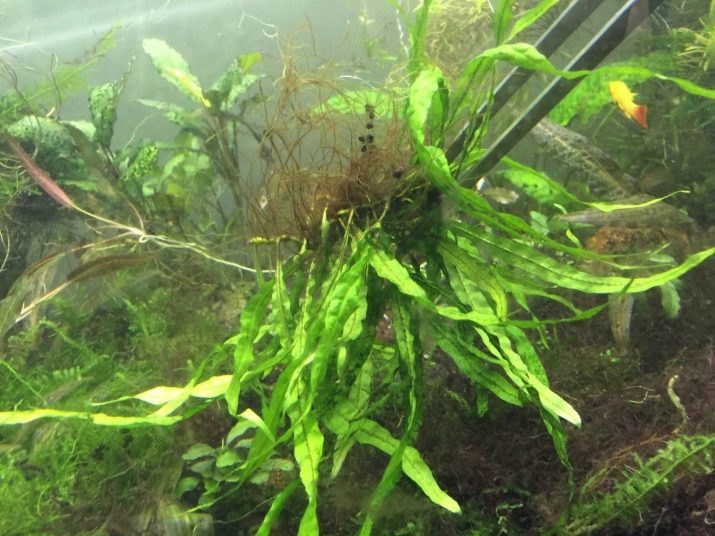
How to contain?
Under the right conditions for keeping cryptocorynes in the aquarium, the plant can delight with its appearance for a long time.
Unpretentious vegetation does not require special lighting. Cryptocoryne can grow in the shade or in natural light, and can grow both in freshly changed water and in not very fresh water. In addition, the plant is not affected in any way by the supply of carbon dioxide.
Planting a plant is better on muddy ground. Cryptocoryne will not refuse additional feeding in the form of clay and peat balls and insoluble fertilizers. Can be applied liquid fertilizers.

But one should take into account the presence of other vegetation, which, with live feeding, can grow rapidly. And also Cryptocoryne should be fed with mineral fertilizers.
Minerals have a beneficial effect on the external, decorative appearance.
A sudden change of lighting is not recommended. For example, moving the aquarium from a sunny location to the shade. Changes in water composition and temperature can also lead to a condition called cryptocoryne disease. Diseased vegetation has yellowed rotten leaves that dissolve in water.
A plant that has undergone such an ailment can be saved if the root system has not been damaged. It is necessary to change the water and separate the decayed parts.
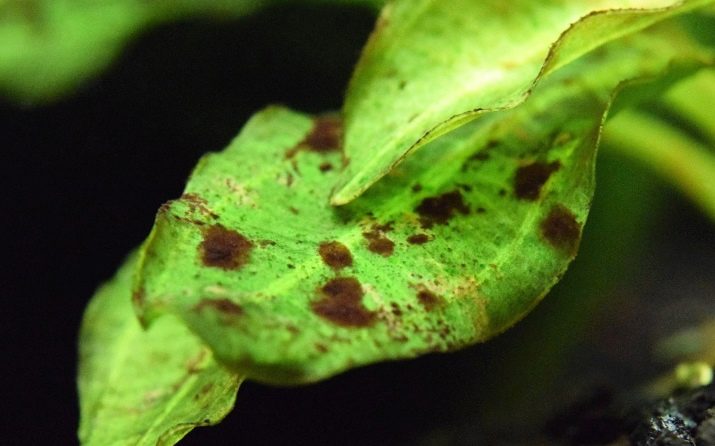
Although Cryptocoryne belongs to unpretentious plants, it also needs certain conditions for keeping:
- the thickness of the soil must be at least 5 cm;
- comfortable water temperature - from +25 to +29 degrees Celsius;
- acidic environment - 6.5-7.4 pH;
- water hardness - 6-10 gH;
- the water in the aquarium should be changed once a week;
- the plant requires an annual transplant;
- diffused lighting power - 0.4-0.5 W / l.
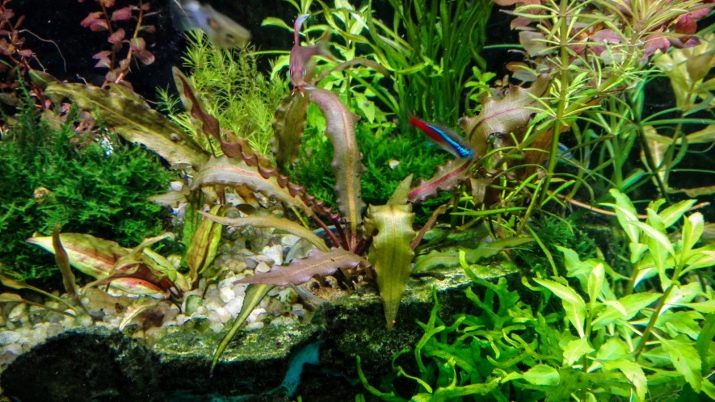
Flowering can also be achieved under certain conditions. To do this, you need to perform several steps.
- An ordinary flower pot is filled with soil without lime admixture and humus with the addition of peat.
- The bush is planted in soil, sprinkled with decorative stones and transferred to the aquarium. The water should be filled so that it is 4 cm higher than the ground level. The ground should also be heated with a bottom heater.
With this content, the plant is able to bloom within one year.
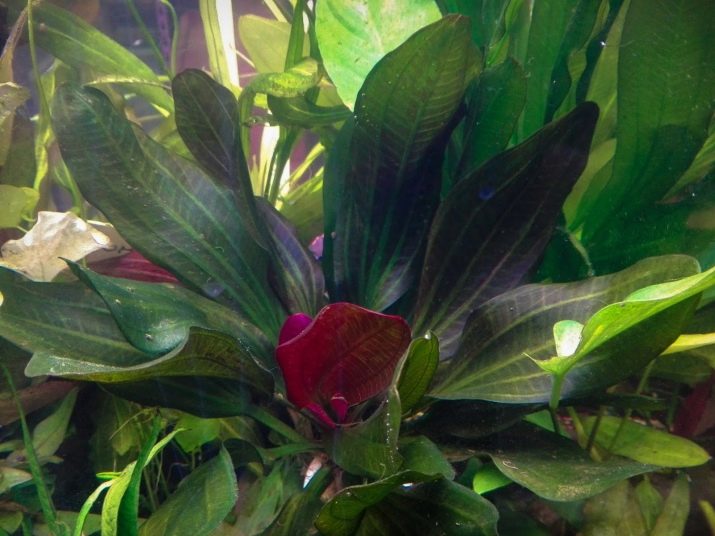
Breeding
Reproduction of the plant occurs after a year of growth and is carried out without the intervention of the aquarist. Cryptocoryne reproduces vegetatively with the help of shoots of the root system.
If you have mature vegetation in your aquarium, it is sometimes worth breeding. In this case, one should pay attention to the number of leaves on young plants. If the shoot has at least 3 leaves, then young vegetation can be safely separated from the mother shoot. Thus, the young Cryptocoryne takes root better and develops quickly. Some plant varieties have extensive root systems that can be used for vegetative propagation.
Plant propagation should be approached very carefully. For safe reproduction, a transplant time should be chosen.
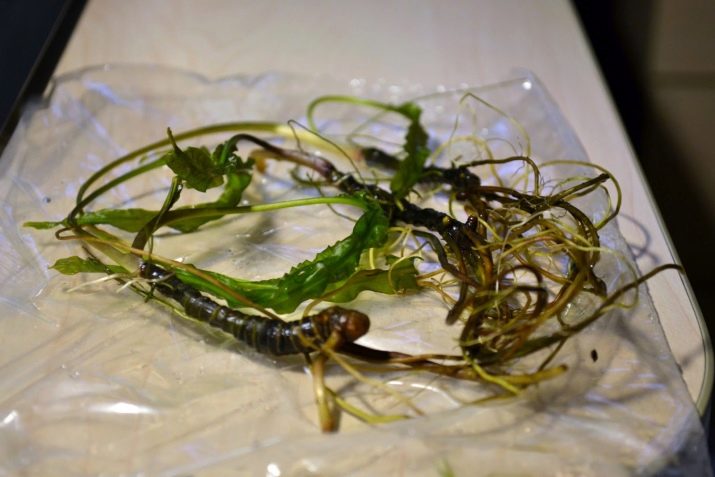
It is best to use root pruning. When using the latter option, the plant does not need to be planted out of the soil.
When pruning the rhizome, you should carefully examine it for the presence of kidneys. After that, markings are put and cut so that there are kidneys on each part. This technique will ensure the supply of nutrients to each part of the plant. Further, the trimmed parts are immersed in water, where the mother shoot grows.
The growth and development of young plants depends on the quality of the pruning and the conditions of maintenance. After the roots have germinated and the leaves emerge from the bud, the Cryptocoryne should be transferred to the jar. But for further growth, you can leave the plants in the aquarium.
At the initial stage of growth, young vegetation must be protected from snails and algae.
There is also a way propagation by seeds.
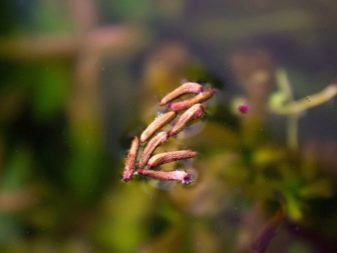

However, this option is almost impossible with artificial breeding. Several scientists and biologists are working in this direction and have achieved some success.
So, German experts forced insects to crawl into the inner part of the flower tube, where the reproductive system of the plant is located. After that, the hole was closed with a swab. As a result of the experiment, seeds of some species were obtained. Plants intended for flowering grew under special conditions. The vegetation was grown in natural light for a couple of months. Such plants had a well-developed rhizome and leaves.
To obtain seeds artificially, certain conditions should be created for insects that will pollinate the plant. To do this, a plastic bag is put on the flower and insects are placed in it. The constant presence of insects inside the flower during the entire period of pollination can be ensured by a constant change of lighting. After pollination, the bag is removed.

The plant grows under normal conditions until the fruit ripens. After the fruit is immersed in water. The seeds detach from the shell and begin to grow. Seed germination time lasts up to six months. First, the seeds float, then settle to the ground. After that, they are collected and sown in glass containers.
The composition of the soil should include sand with the addition of peat and clay. Wait until the young plants reach a height of 3 cm. After that, you need to move them to the aquarium. You can also use other conditions for seed breeding. The plant is moved from closed soil to semi-covered soil with high humidity.
After transferring from closed ground to the usual growing conditions, the plant begins to grow rapidly, develop and bloom.
For the peculiarities of the content of Cryptocorynes, see below.








